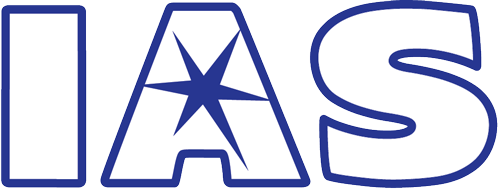



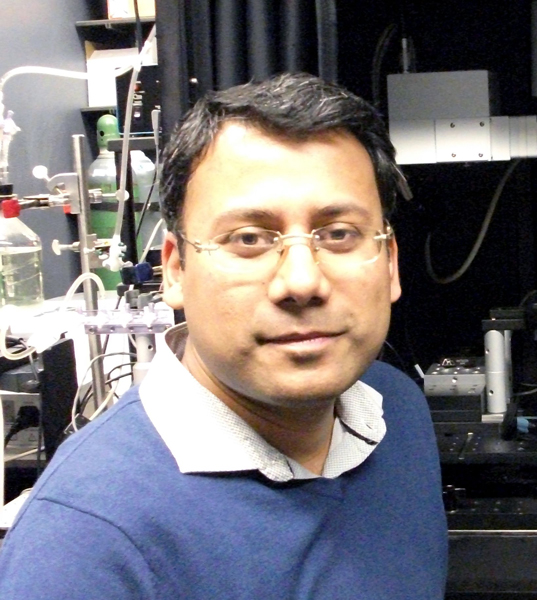
Amit Agarwal is the Chica and Heinz Schaller Research Group Leader at the Institute for Anatomy and Cell Biology, Heidelberg University, Germany. He received his Ph.D. in neurosciences, at the Max-Planck Institute of Experimental Medicine, Göttingen, Germany with Dr. Klaus-Armin Nave. He performed his post-doctoral training from 2010 to 2017, in the Department of Neuroscience at the Johns Hopkins University, USA with Dr. Dwight Bergles. The Agarwal laboratory uses optophysiology and in vivo multiphoton microscopic techniques, single-cell genetics, mouse transgenics, and computational methodologies to decipher cellular connectivity and molecular pathways by which neurons and glia interact, interconnect and integrate into the neural networks. The focal aim of his laboratory is to understand the functional significance of these neuron-glia connections in the neural circuits, and their role in cognition, learning, and memory; and study how disturbances in these fine cellular interactions can contribute to various neurological and psychiatric disorders ranging from multiple sclerosis to autism.
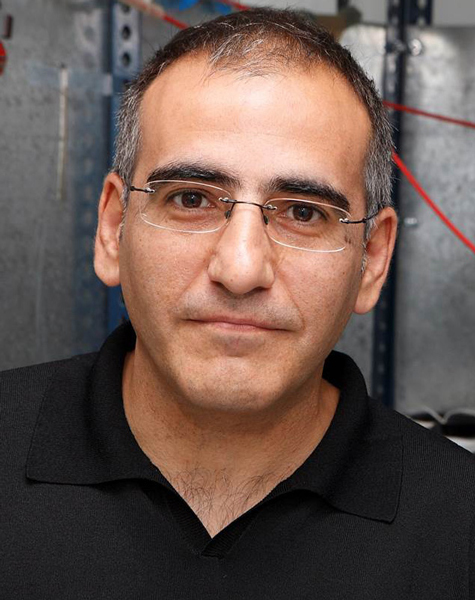
Alfonso Araque is Professor in the Department of Neuroscience at the University of Minnesota since 2013. He obtained his Ph.D. in 1993 in Biological Sciences at Universidad Complutense de Madrid. He did his postdoctoral research with Dr Phil Haydon at the Iowa State University, Ames, USA, from 1996 to 1999, studying astrocyte-neuron communication in cultured cells. He established his independent laboratory in 2001 at the Cajal Institute in Madrid, Spain, where he continued to study the properties and mechanisms of the reciprocal communication between neurons and astrocytes. He was Coordinator of the Biomedicine area of the National Agency for Evaluation and Prospective in Spain, Vice-President of the Spanish Society for Neuroscience. He is editorial board member of Cell Calcium, Glia and eNeuro. His major contributions include: the first demonstration of astrocyte-induced slow inward currents (SIC) mediated by calcium and SNARE-protein dependent glutamate release from astrocytes; the ability of astrocytes to discriminate between the activity of different synapses and to integrate those inputs, which indicate that astrocytes show integrative properties for synaptic information processing; the existence of new forms of neuron-astrocyte signaling mediated by endocannabinoids; the ability of astrocytes to regulate synaptic transmitter release at single hippocampal synapses; the existence of a form of long-term potentiation (LTP) of synaptic transmission induced by the temporal coincidence of astrocytic and postsynaptic signalling; the ability of endocannabinoids to potentiate synaptic transmission through stimulation of astrocytes; the involvement of astrocytes in the cholinergic-induced LTP in vivo; and the circuit- and synapse-specific astrocyte-neuron signaling in the striatum.
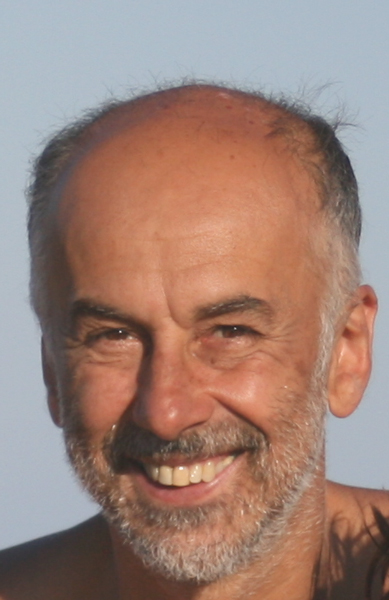
Dr Giorgio Carmignoto is group leader at the Institute of Neurosciences which belongs to the National Research Council (CNR), the main public research organisation in Italy. He is also associated with the Department of Biomedical Sciences of the University of Padua. The central theme of his research is the specific signalling between neurons and astrocytes investigated by laser-scanning microscope living cell imaging and patch-clamp recording techniques. Among obtained results are the first evidence for the ability of astrocytes i) to be activated by neurotransmitter synaptic release in slice preparations; ii) to work as principal mediators of neurovascular coupling; iii) to generate neuronal synchrony by acting on extrasynaptic NMDA receptors. His research is now focused on the role of astrocytes in epilepsy.
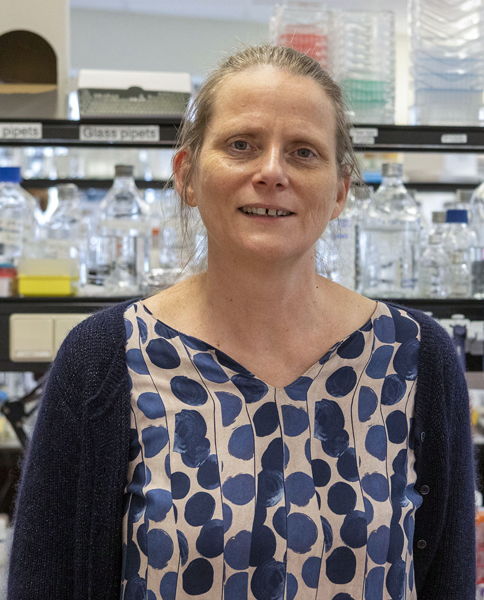
Elly Hol is professor of “Glia biology of brain diseases” at the Utrecht University, head of the department of Translational Neuroscience at the University Medical Center Utrecht, and a member of the Academia Europaea. Her research is focused on the role of glial cells in brain diseases. The overall aim is to elucidate the molecular and functional changes in glia that contribute to the pathogenesis of neurological and psychiatric diseases. Her work is translational and includes studies on glial cells in human post-mortem brain tissue, in human cell models, and in mouse models for brain diseases. Elly was trained as a medical biologist with a specialization in molecular neurobiology. After her PhD in Utrecht, she obtained a Max-Planck Fellowship to work at the Max-Planck-Institute for Psychiatry in Martinsried. In 1997, she started as a post-doc at the Netherlands Institute for Neuroscience in Amsterdam, and between 2003 and 2013 she headed the group “Astrocyte Biology & Neurodegeneration”. As of 2013 she works as a principal investigator at the department of translational neuroscience, UMC Utrecht Brain Center. She is in the editorial board of Glia, member of the scientific advisory board of Alzheimer Nederland, chair of the scientific advisory board of Parkinson Nederland, chair of GliaNed, director of the Neuroscience Master and PhD program of the Utrecht University Graduate School of Life Sciences, and director of education Division Neuroscience at the UMCU.
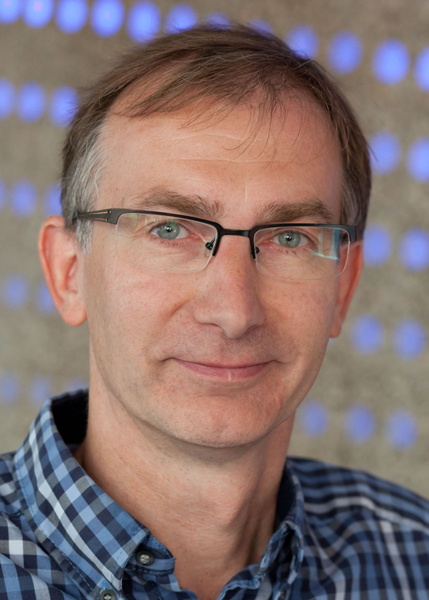
Frank Kirchhoff is Chair of the Department of Molecular Physiology at the University of Saarland in Homburg, Germany. He studied biochemistry at the University of Hannover, received his PhD degree in neurobiology from the University of Heidelberg and habilitated in biochemistry at the Free University of Berlin. After postdoctoral periods at the University of Heidelberg and the Max-Delbrück-Centrum for Molecular Medicine, Berlin, he started his research group ‘Glial Physiology and Imaging’ at the Max Planck Institute of Experimental Medicine, Department of Neurogenetics in Göttingen in 2000. In 2009, he was appointed as full professor at the University of Saarland. He is Editorial Board Member of GLIA and Journal of Chemical Neuroanatomy. His research addresses the molecular and cellular mechanisms of neuron-glia interactions using transgenic mouse models and in vivo-imaging. He developed a series of transgenic mice with cell-type specific fluorescent protein or inducible cre DNA recombinase expression in various glial cells. These mice appeared as valuable tools to study the structural dynamics of glial cells and the function of glial transmitter receptors in vivo.

Dr. Giovanni Marsicano is a tenured researcher at Inserm. He leads the group “Endocannabinoids and Neuroadaptation” at the NeuroCentre Magendie, an INSERM and University of Bordeaux Research Center devoted to neuroscience. Dr. Marsicano is a Veterinary Medicine Doctor as formation. After his diploma, he worked on research related to Embryonic Stem Cells from farm animals and to xenotransplantation models in Italy for 4 years. He then moved to the Max-Planck Institute of Psychiatry in Munich for a PhD student position, where he initiated the work on the role of type-1 cannabinoid receptors (CB1) and of the endocannabinoid system (ECS) in brain physiology, which since has been his main research interest. The subject of his PhD thesis was the generation of conditional mutants for CB1 and anatomical and functional studies on the mechanisms of action of the ECS. After PhD graduation in 2001, he made two post-doctoral periods in Germany and moved to Bordeaux in 2006 (recruited as Inserm senior scientist in 2007) to lead his independent research group. He is member of the SfN, the French Society of Neuroscience, the International Cannabinoid Research Society (ICRS) and of the International Society of Neurochemistry (ISN). By using conditional mutagenesis in mice and behavioral, biochemical and electrophysiological tools, his work contributed defining the role of CB1 in specific cell populations in learning and memory, food intake and energy balance, anxiety, stress-coping and others. Through a clear bottom-up scientific approach, these studies allowed exploring some general principles of brain functioning, such as the balance between excitation and inhibition, the interactions between the brain and the periphery, the importance of energy metabolism in brain functions and, more recently, the interaction glial-neurons. In 2012, by generating conditional mutant mice lacking CB1 receptors from GFAP-positive cells, he contributed to define the role of astroglial CB1 receptors in the working memory effects of cannabinoids and on their in vivo electrophysiological correlates. Since then, the role of astroglial CB1 receptors became one of the most important lines of research in his group. In particular, published and ongoing studies deal with the impact of CB1 receptors on gliotransmission and bioenergetic functions of astrocytes. Dr. Marsicano will present a brief critical analysis of advantages and limitations of behavioral approaches in neuroscience and will summarize the recent results of his team concerning the roles of astroglial CB1 receptors in brain functions.
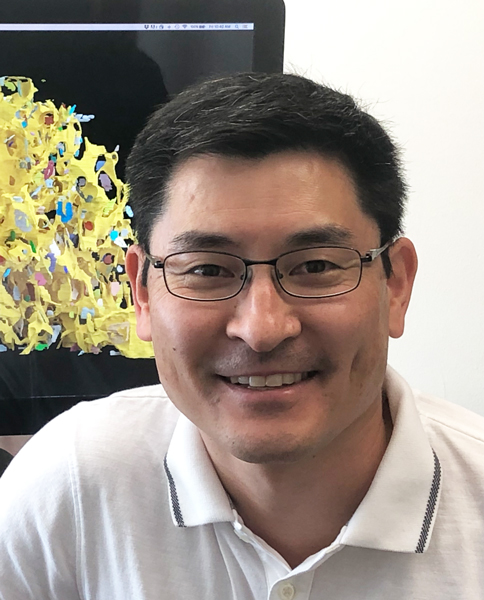
Keith Murai is the Director of the Centre for Research in Neuroscience at McGill University, Leader of the Brain Repair and Integrative Neuroscience (BRaIN) Program at the Research Institute of the McGill University Health Centre, and Professor in the Department of Neurology and Neurosurgery at McGill University. His research focuses on: (1) Understanding how neurons and glial cells cooperate to regulate brain development, cellular heterogeneity, and homeostasis, and (2) Discovering mechanism that regulate the plasticity of synapses that underlie memory formation and cognition. His research group also interlaces preclinical models of Down syndrome and Alzheimer’s disease to better understand how specific neuronal and glial pathways become disrupted under pathological conditions and how activating/inhibiting specific pathways can protect the diseased or injured brain. His laboratory uses advanced genetic, imaging, physiological, and optogenetic techniques and has pioneered approaches for understanding glial cells in brain function.
https://www.mcgill.ca/crn/research/murai
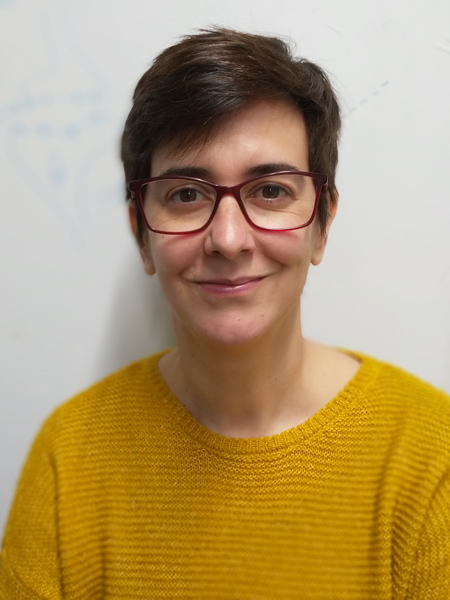
Gertrudis Perea is staff scientist at the Spanish National Research Council (CSIC) and Head of Neuron-Glia Networks Lab at the Cajal Institute, Madrid, Spain. She received her PhD in 2006 in Neuroscience, at the Autonoma University of Madrid (UAM), Spain with Prof. Araque. She performed her post-doctoral training from 2007 to 2013 at the Cajal Institute with Prof. Araque, and Picower Institute for Learning and Memory (MIT, Cambridge, USA) with Prof. Mriganka Sur. As of 2014 she works as a principal investigator at the Department of Functional and Systems Neurobiology, Cajal Institute (CSIC). She was Vice-President of the Spanish Society for Neuroscience (2019-2021). She is editorial board member of Glia, Frontiers in Cellular Neuroscience - Non-Neuronal Cells, Brain Sciences - NeuroGlia section. The Perea lab is focused in understanding the role of astrocytes in the neural coding underling brain activity and complex animal behaviors. Her results have contributed to consolidate the concept of Tripartite Synapse in Neuroscience, showing that astrocytes can modulate neuronal activity targeting presynaptic and postsynaptic receptors, being involved in plasticity processes. Combining molecular approaches, electrophysiology, imaging techniques, optogenetics and behavioral tests, she investigates the role of astrocytes in the synaptic and circuits function in health and neurological and psychiatric disorders.
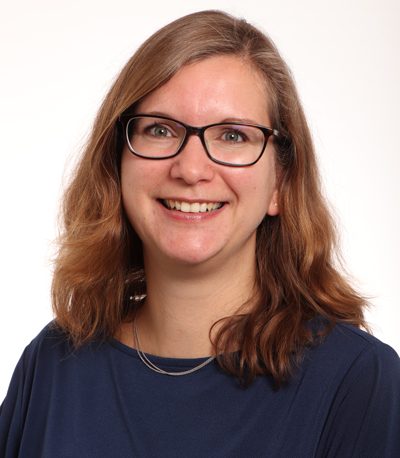
Kerstin Lenk is assistant professor of Computational Neuroscience at the Graz University of Technology in Austria. She has received a PhD in Computer Science from the Clausthal University of Technology in Germany. Her first postdoc was in bioinformatics at the DFG-Center for Regenerative Therapies Dresden at TU Dresden in Germany. For her second postdoc, she received a fellowship from the Academy of Finland for the three years project “Simulation of local calcium dynamics in human single-cell astrocytes and neuron-astrocyte networks.” Her lab focuses on the development of computational single-cell astrocyte and neuron-astrocyte network models. Moreover, her group performs in vitro experiments with rodent neuron-astrocyte networks and RNA-Seq data analysis from human pluripotent stem cell-derived neurons and astrocytes. Their research aims to understand the neuron-astrocyte interaction in healthy conditions and pathologies like epilepsy and schizophrenia.
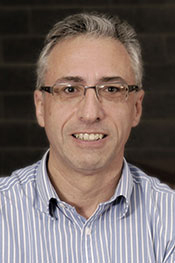
Richard Robitaille is a Professor in the Département de neurosciences at Université de Montréal, Montréal, Canada. He is the director of the research group on the central nervous system (GRSNC) at Université de Montréal. He received his Ph.D. in 1989 in Neurobiology at Université Laval with Dr Jacques P. Tremblay. He did his post-doctoral training with Dr Milton P. Charlton in the Department of Physiology at the University of Toronto from 1989 to 1993. He then started his independent research activities in 1993 at Université de Montréal where he stayed since. He received number of national and international awards at all stages of his career. He is an associate editor for the journal Glia and Current Opinion in Physiology. His research focuses on the role of glial cells in the regulation of synaptic functions in normal as well as in pathological conditions. He uses mammalian neuromuscular junctions and acute brain slices as experimental models. He addresses the role of glial cells in the regulation of basal synaptic transmission and the regulation of synaptic plasticity. He also studies the contribution of glial cells in the outcome of synaptic competition, during aging and in ALS.
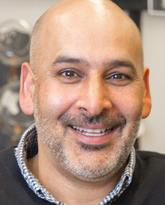
Dr. Jaideep Bains is Professor at the University of Calgary and Director of the Krembil Research Institute in Toronto. His research uses multiple experimental approaches to reveal key features about neural circuits that regulate internal state are also purposed to control behavior and store information in response to challenges. Specifically, hisab uses in vitro slice electrophysiology, in vivo imaging, optogenetics, behavioral analysis tools and physiological assays to characterize neural circuits that decode stress, modify internal states and generate specific coping behaviors. One of their goals is to better understand the mechanisms that allow these circuits, or specific cell populations, to store information related to the modality, intensity and temporal features of stress.
During his work as a graduate student at Queen’s University, he focused on the neural regulation of cardiovascular output and established a key role for nitric oxide as a retrograde transmitter at GABA synapses. He performed in vivo electrophysiology to interrogate long-range hypothalamic-spinal cord connections and whole-cell recordings in brain slices to examine retrograde signals and dendritic excitability. As a Human Frontiers Postdoctoral Fellow at the University of Colorado, he performed electrophysiology experiments to establish bi-directional links between synaptic strength and circuit output in the hippocampus.
In addition to his extensive experience in synaptic physiology and electrophysiology his lab has used circuit mapping approaches to link activity in specific cell populations to different behaviors. Their work has linked brief stress exposure and enduring synaptic changes in the hypothalamus (reviewed in Bains et al, Nat Rev Nsci, 2015). More recently, they have shown new roles for hypothalamic CRH neurons as bottom-up controllers for complex behaviors associated with stress coping (Fuzesi et al, Nat Comm, 2016), the transmission and detection of affective states between mice (Sterley et al, Nat Nsci, 2018) and linking stress controllability and active behaviour strategies (Daviu et al, Nat Nsci, 2020). They also have provided clear evidence supporting a role for astrocytes in controlling the strength of excitatory synapses in the hypothalamus (Gordon et al, Nat Nsci, 2005, Neuron, 2009) and in regulating information storage during acute stress (Murphy-Royal et al, Nat Comm, 2020).